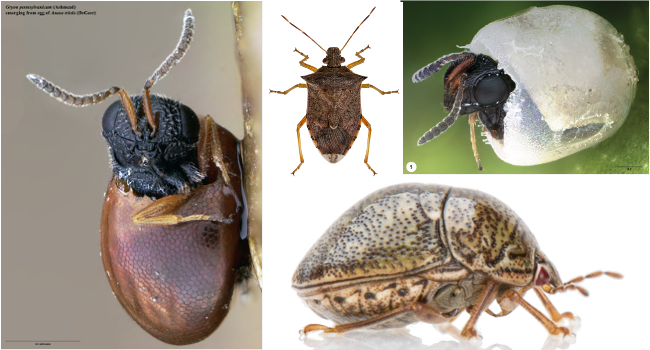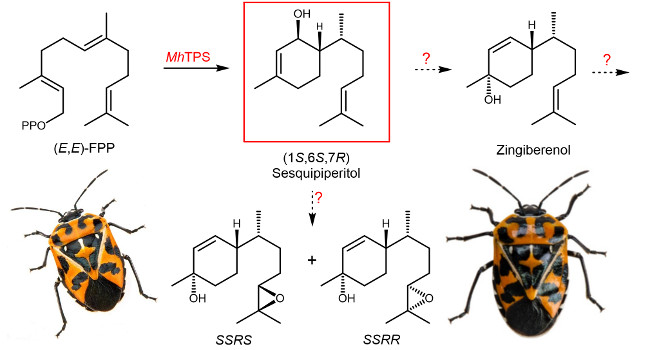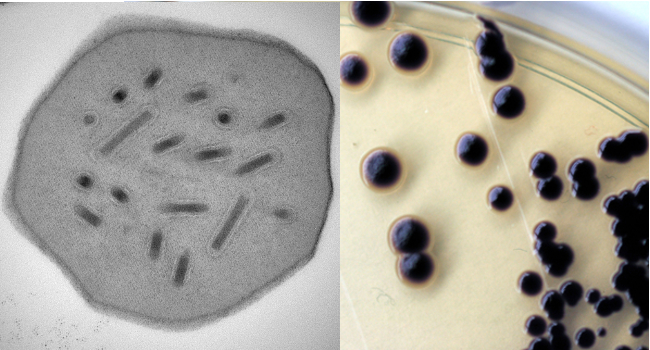Photo Carousel Links
We study native and invasive insect pests such as the kudzu bug (Megacopta cribraria, bottom right) and beneficial predatory and parasitic insects that can be used to suppress pest populations, including the spined soldier bug (Podisus maculiventris, top center) and parasitoid wasps (emerging from a squash bug egg, left; and from a brown marmorated stink bug egg, top right).
We identify insect pheromones and other attractants that can be synthesized and deployed against insect pests. Pictured is the hypothesized biosynthetic pathway for the two components (SSRS, SSRR) of the harlequin bug (Murgantia histrionica) aggregation pheromone.
We are working on ways to reduce populations of Lyme disease-transmitting ticks.
Left: IIBBL staff check mice for tick infestation.
Right: Capillary feeding of a tick.
We identify and test insect-specific microbial organisms for insect pest control.
Left: Section through an occlusion body of a virus that kills the winter moth (Operophtera brumata), an invasive insect pest.
Right: Colonies of the insect-pathogenic bacterium Chromobacterium subtsugae
Mission
The mission of the Invasive Insect Biocontrol and Behavior Laboratory (IIBBL) is to conduct research on insect pests of agriculture and mitigate their threats to our Nation’s food and fiber. Using biological, molecular, chemical and non chemical approaches, scientists are developing new, cost-effective and sustainable strategies for controlling native insect pests and newly-introduced invasive species, such as the brown marmorated stink bug. An additional focus of the IIBBL is the discovery and development of methods to protect people from disease pathogens transmitted by medically-important insects and biting arthropods, such as the Asian tiger mosquito.




